The Tesla Model S is one of the best cars in which to be in a crash ever built. It has aced the US government’s crash testing done by NHTSA. However, the area of automotive safety now goes far beyond just doing well after the crash begins, and NHTSA is not the world’s leading authority on automotive safety. In fact, NHTSA is not even America’s leading authority on auto safety, the Insurance Institute for Highway Safety (IIHS) is.
Today is the first day of 2014, which marks the third calendar year in which the Tesla Model S has been for sale. As of now, the current Tesla Model S is not available with proven safety technology available from every other automaker in the US, and we don’t mean just at the Tesla Model S’ price point.
Tesla is proud that none of its customers have been killed in a Model S crash and currently Tesla's statement "The Highest Safety Rating In America" is the first thing one sees when clicking on the Tesla website. Hopefully the company's zero fatal occupant record will continue and never change. However, people have been killed in Model S crashes. They were in the other car. In one case witnesses who saw a crash between a Tesla and a Honda Accord say a Tesla veered across the yellow lines and hit the Honda coming the other way head on. Had the Model S been equipped with the safety feature known as lane keeping (not to be confused with the simple warning systems first released), something that all of its price point competitors offer, the accident may never have happened and two people might be alive right now. (see updates in the comments below) This is an extreme example. We point to it not as an insult to the Tesla Model S, but as evidence that automotive safety goes beyond the “mutually assured destruction” that comes from being in the biggest, strongest, heaviest car in an accident.
The IIHS has not tested the Tesla Model S and that is because the Institute generally sticks to moderate to high volume passenger cars which sell at moderate or below price levels. If you don’t believe that look for yourself. Since the Model S has not been tested by IIHS it cannot earn the auto industry’s highest honor, the Top Safety Pick + rating that only cars that do well on the small frontal overlap test and which also have some form of forward collision prevention can earn. We don’t really know how the Model S would do in the small overlap test, but given its robust design we suspect it might do rather well. However, some pretty safe cars that also did well in NHTSA tests were caught out by the small frontal overlap test and many needed to be redesigned before they could pass.
More importantly, Tesla has no forward collision prevention system as of yet. We will not accept that this is outside of Tesla’s scope of technology, and we will not accept that profit margins, or any financial reason would preclude Tesla from adding this to the Model S. In fact, the world’s best system is found on the very affordable Subaru Outback, not a pricey European car. Regardless of how well the Model S crashes, not crashing is a distinct safety advantage. For example, if a Tesla driver in fog at moderate speeds did what so many drivers do and rear ended a parked or slowly moving tractor trailer. More drivers are killed each year this way than are from texting. Forward collision prevention can save a driver’s life in this scenario. The Tesla Model S also has no system to prevent the car from hitting a pedestrian. Many do.
Tesla had better get moving. The US government has a tendency to make safety electronics standard after the technology is available from all manufacturers and at a low price point. ABS, stability control, tire pressure monitoring and rear back-up cameras and are all examples of this (and in order). The Tesla Gen III is likely to be required to have this technology, so why not do it now?
It is also strange that Tesla has not yet added other simple, but proven safety features. One of our favorites is adaptive headlights. These are the lights that turn to point at the road ahead when the car turns. Having owned two cars with this style of lighting the author can attest to their real-world effectiveness. My opinion matters little though. What really matters is that the Highway Loss Data Institute studied some of the newer supposed “safety” features now being sold with new cars and found many, such as blind spot monitoring, did not reduce accidents. However, adaptive front headlights were found to have a measurable, positive affect in preventing crashes. This technology is found on many low cost cars such as the Mazda CX-5 and is has been available since the days of the Tucker. It is also “wicked awesome” to see it work. The Tesla Model S is all about “wicked awesome” technology, which is why we can’t understand how come it is not standard, or at least an option, on this amazing car.
The final technology we thing that the Tesla Model S should adopt quickly is back-up systems. We would include both the ability to have the car stop itself if a child or other object is behind the car (Infiniti introduced this a couple years ago), and also a rear-cross traffic system. Rear cross traffic helps a driver to back out of a spot when to brute ‘utes are on either side and cars come speeding up the isles. It is available on low cost vehicles like the RAV 4 and people that use it love it.
A big part of the reason I write about Tesla is the passion of the owners and enthusiasts. I enjoy the dialogue from fans in the comments under stories. Here I wish to point out a few things before the discussion begins. Note the photo with the story. Is it an exciting photo of a smashed Model S in NHTSA testing? No it is not. Now look down. Is the video of the horrific fatal crash involving a Model S posted there to somehow imply the Model S is not safe? No, I chose not to sensationalize this story at the cost of page views. The news report video of the fatal crash is imbedded as a link to serve as a reference for anyone who wishes to view it. My point is that this is not a story written to slam the Tesla Model S, but rather one intended to spur a constructive dialogue and get Tesla owners and enthusiasts thinking about why such an amazing car is so far behind in such a critical area.


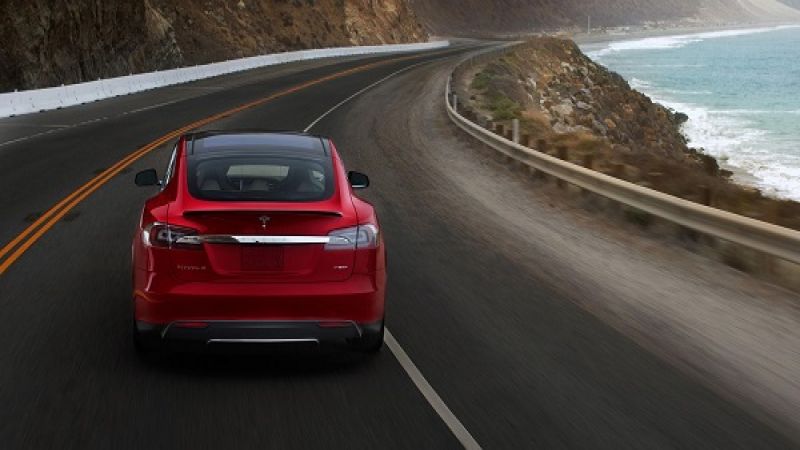





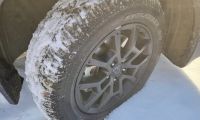
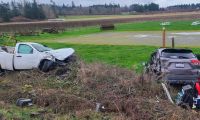
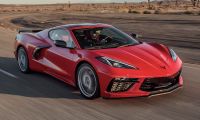
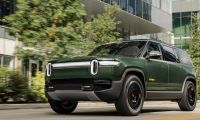
Comments
I agree with many of your
Permalink
I agree with many of your points, with one notable exception: IIHS is far from the "world's authority on auto safety." IIHS has done credible work on pointing out safety weaknesses in vehicles and policies, but at the end of the day, they are a creature of the insurance industry. Their conclusions and recommendations cannot be considered objective or having the best interests of consumers at heart. Similarly, some consider NHTSA to be too closely aligned with vehicle manufacturers. Though somewhat different in function, I consider the German TUV's to be the "world's authority on auto safety."
Thanks. Yes, you're right
Permalink
Thanks. Yes, you're right about the IIHS being aligned with the insurance industry. However, their current testing and ratings system is head and shoulders above the NHTSA testing and ratings. Not be argumentative, but I didn't say they were the world's authority, I said they were America's. You and I might be in complete agreement :)
After I published this I
Permalink
After I published this I learned from a FB Tesla Forum Member that the driver in the fatal crash was charged with a felony and also accused of speeding. The driver may have been in some sort of race with another car, though that car was identified and the driver was not charged.
If you now realize that fatal
Permalink
In reply to After I published this I by John Goreham
If you now realize that fatal crash was the result of a drag race, why have you not amended your article to correct your error? It is grossly irresponsible to fraudulently misrepresent the facts to further your agenda. You are not a reporter. You're a hack.
Thanks for the suggestion RD.
Permalink
In reply to If you now realize that fatal by RD (not verified)
Thanks for the suggestion RD. The story has been amended to alert the reader that there is more on that below. We'll see what comes of the charges. The witnesses in the news report mentioned only that the Tesla driver crossed the line. The racing part is not yet proven. If the driver is convicted of the crimes and racing is confirmed I will update the story again.
I don't think that having
Permalink
I don't think that having lane departure warnings would have saved that Honda. If I remember correctly, that incident another car was involved where they threw a cup at the Model S which tried to avoid it and ended up hitting the Honda. Now whether that happened or not I don't know but if true than 100% lane departure wouldn't have helped.
On top of that, according to studies by the IIHS lane departure warnings are useless. Actually, they found that lane departure warnings lead to more accidents.(Though it is within margin of error). But point being is that lane departure warnings don't do anything really.
The collision avoidance and adaptive headlights on the other hand would be a welcome addition.
Yes, I agree. I have driven
Permalink
Yes, I agree. I have driven a car with "Lane Keeping" and that seems to have some promise. It steers the car back into the lane if you let it drift out of the marked lanes. I don't know how to describe it better than that, but the Mercedes I drove did it.
If I were Tesla, I would
Permalink
If I were Tesla, I would first fix something much more basid: The mini-headrests. If the impact is not from straight behind, there is a serious chance that the head will miss the narrow headrests. Even worse in the back, where the headrests are non-adjustable, and end at neck-height of an adult passenger. As much as I love and support Tesla, this does not scream "safe" to me and must be fixed.
Great comment! Indeed
Permalink
In reply to If I were Tesla, I would by IchDochNicht (not verified)
Great comment! Indeed according to IIHS this is the most common injury to passengers in a car. It also accounts for fully a quarter of all insurance costs. Don't believe it? Here is proof: http://www.torquenews.com/1083/most-common-car-crash-injury-and-how-you-can-avoid-it
Umm isn't Tesla already
Permalink
Umm isn't Tesla already working on autonomous driving that would be available in 3 years? C'mon author, search for 'Tesla autonomous driving'. Read up on it and you'll find all of your aforementioned safety tech included, and then some. How about being able to drive safely with no hands AND feet? You're clearly uninformed and old school. Reading this article was a complete waste of time.
Funny how there is no mention of providing safety against underbody puncture, which is easily the most controversial safety case against Tesla because of the recent car fires. That would have been a more interesting read in my opinion.
Cadillac and BMW have
Permalink
In reply to Umm isn't Tesla already by ByeByeOil (not verified)
Thanks for your thoughts ByByeOil. Cadillac and BMW have autonomous driving modes being launched this year. Mazda, Subaru, and many affordable brands already offer pedestrian avoidance technology and all of Tesla's competitors today offer forward collision avoidance. These are all autonomous driving technologies. Tesla has nothing. Working on for release in 3 years? The title says must add now. Torque News covered the under body and fire issues months ago.